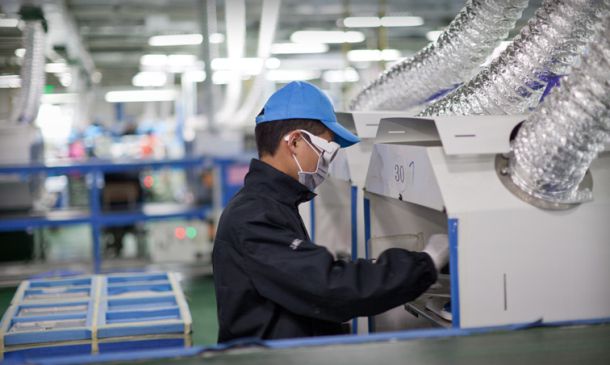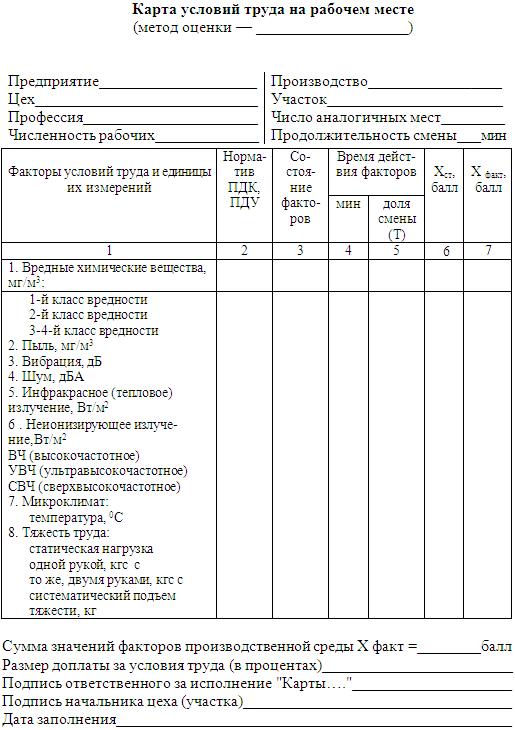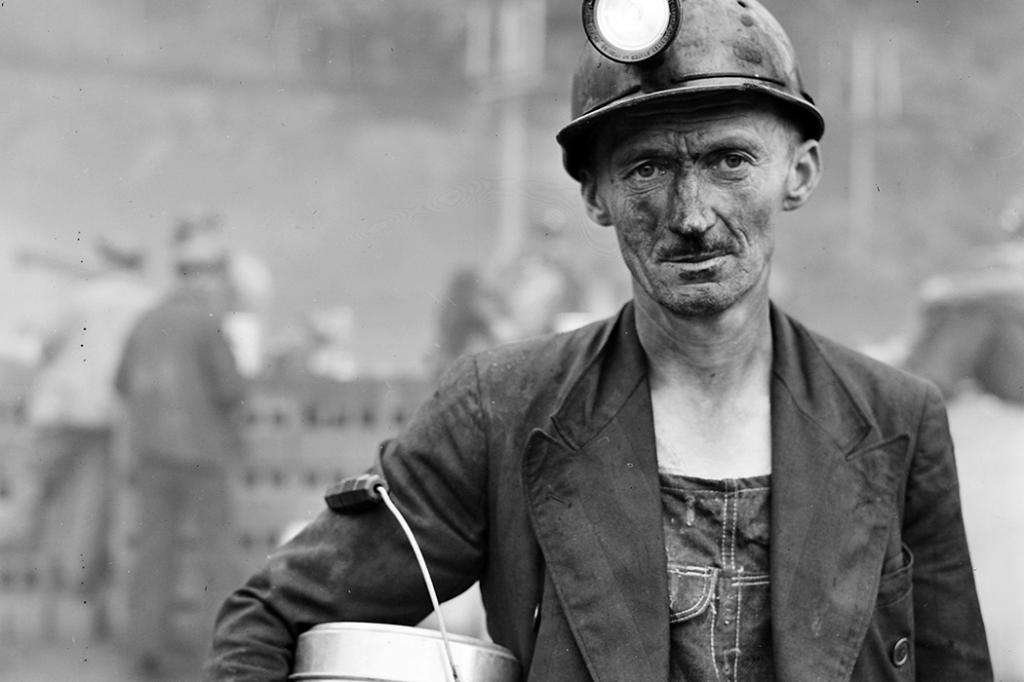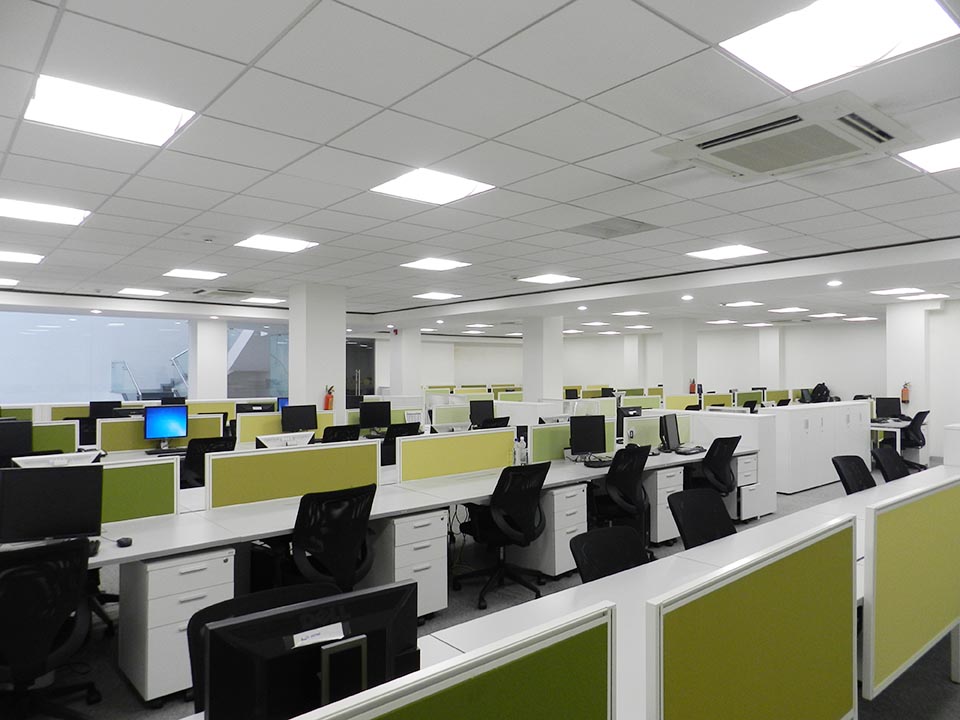In order to sanitary-hygienic characteristics of working conditions in various fields, uniform criteria have been adopted to determine the degree of danger and harmfulness of the manufacturing industry, as well as the complexity of labor activity. They are reflected in regulations and a number of by-laws.
What are the hygiene criteria?
This term refers to indicators used for a differentiated assessment of the degree of deviation from the norm of the conditions of the manufacturing industry and violations in the labor sphere. As a norm, it is customary to consider the maximum permissible values to which various indicators correspond.
The sanitary-hygienic characteristic of working conditions is compiled by the Rospotrebnadzor Office in each region of the Russian Federation. The purpose of determining the limit parameters for assessing the conditions of work at workplaces is as follows:
- control the level of harmfulness and danger of the conditions in which employees have to fulfill their labor duties;
- equip jobs in accordance with applicable sanitary and hygienic rules and regulations;
- prioritize the organization of recreational activities and recreation staff.
Thanks to the information on sanitary and hygienic working conditions at enterprises, state administrations of regions, cities and entire regions can create information databases, carry out certification of jobs according to the described characteristics, and certify the quality of services in accordance with labor protection standards.
When hiring, it is extremely important to compare the state of health of the applicant with the work environment in which he intends to carry out professional activities. Sanitary and hygienic working conditions are taken into account during periodic medical and preventive examinations, investigations of cases of occupational diseases, injuries, and poisoning.

Classification of factors of work hazard
Carrying out professional activities, a person has to deal with various factors that adversely affect his health. These include sophisticated equipment, the environmental situation, and hard physical labor. All these conditions adversely affect the body, provoke the occurrence of occupational diseases, are the causes of temporary or permanent loss of working capacity, reduce resistance to somatic and infectious ailments, lead to reproductive problems, etc. In accordance with the sanitary and hygienic characteristics of working conditions, harmful factors divided into several categories.
Physical Hazardous Exposure
The first group is physical or natural conditions. First of all, these are temperature jumps, dampness and air circulation, thermal radiation. This group also includes non-ionizing electromagnetic and electrostatic fields with an industrial frequency of up to 50 Hz against the background of an overestimated radio frequency or optical range. Among the physical harmful factors are considered especially dangerous:
- laser, radiation and ultraviolet radiation;
- increased noise levels in production, ultra- and infrasound;
- local and general vibration;
- contact with aerosols of fibrogenic action.
The absence and insufficiency of natural or artificial lighting, including direct and reflected glare, and pulsation of illumination, are also considered harmful factors that do not correspond to the established sanitary and hygienic working conditions at workplaces.
Chemical factors
This is the second group. The danger lies in the constant contact of the employee with synthetic compounds that are produced by chemical synthesis. This harmful factor is faced by employees of the pharmacological industry, paint and varnish, mining, chemical and oil refining industries.
The harmful work of biologists
The third category is the biological hazard faced by employees of enterprises of research structures and laboratories specializing in experiments, the development and manufacture of antiviral drugs, and paramilitary groups. In their activities, employees study microorganisms infected or modified at the genetic level, and use them in their trials. This factor of harmful working conditions takes place in the professional work of doctors and specialists involved in the diagnosis and treatment of various infectious diseases in humans and animals.

Other adverse working conditions
In any sample of the sanitary-hygienic characteristics of working conditions, an indicator is indicated that reflects the power load on the body and its individual systems (musculoskeletal system, cardiovascular, respiratory activity). It is called the burden of labor. To determine the severity of labor, the values of the dynamic load, the mass of lifted and transported loads, the total number of working monotonous movements, the time during which the body of the worker is in a statically immobilized position, and other nuances are taken into account.
To unsatisfactory sanitary-hygienic factors of working conditions also include the tension arising in the performance of professional duties. In this case, the increased load is reflected in the central nervous system, sensory organs, sensory, psycho-emotional background of workers.

Safety and health training
When hiring and periodically in the process of carrying out labor activities at the enterprise, subordinates are instructed on the sanitary and hygienic requirements for working conditions. The first briefing is called introductory or primary, each subsequent - repeated, target or unscheduled.
Upon admission to work and familiarization with the primary instruction, the employee, depending on specialization, must undergo an internship (on average from 2 to 14 days) and hone the skills of safe work under the guidance of a mentor. Re-briefing is carried out in case of adoption of new or changes in existing standards and rules. At the slightest update, the sanitary and hygienic characteristics of the working conditions are re-compiled, taking into account innovations.
Unscheduled briefing at the enterprise is carried out with employees when changing industrial technologies, changing equipment, tools, raw materials and other factors that can lead to safety breaches, injuries, accidents, fire. If workers systematically do not comply with sanitary and hygienic norms of working conditions, at the request of the Rospotrebnadzor authorities, the management is obliged to conduct repeated unscheduled briefings with them, the completion of which will be a final test in order to verify the level of knowledge.
How is the sanitary-hygienic characteristic
The order of the Federal Service for Supervision of Consumer Rights Protection and Human Well-Being of 2008 approved the instruction on the procedure for collecting information and drawing up the sanitary and hygienic characteristics of the working conditions of a person in case of detection of symptoms of occupational disease. As already noted, the document is compiled by the territorial divisions of Rospotrebnadzor of the constituent entities of the Russian Federation within two weeks from the moment of receipt of the notice of acute or chronic pathology of the citizen.

In order to draw up a sanitary-hygienic characteristic of a worker’s working conditions, the department has the right to request additional papers or an opinion on the sanitary and epidemiological station at the previous place of work. After a medical diagnostic diagnosis, the citizen is given a referral to MSEC. If it is impossible to establish data on harmful working conditions due to the liquidation of the enterprise, other documents are used to confirm the impact of harmful production factors during the period of professional activity and performance of official duties. They can be an extract from the employee’s work book certified by a notary, briefing journals, an extract from literary and reference materials containing information on the sanitary and hygienic characteristics of working conditions in similar industries.
To prove that the cause of the disease was precisely the dangerous and non-standard working conditions, the testimony of the employer is also taken into account. Any sample of sanitary-hygienic characteristics of working conditions contains information about:
- harmful factors in the manufacturing industry;
- workflow mode;
- concentration and level of toxic substances in the atmosphere.
If it is impossible to obtain conclusions on laboratory and instrumental studies from independent experts, Rospotrebnadzor entrusts the conduct of research to its subordinate institution - the Center for Hygiene and Epidemiology of Rospotrebnadzor. The results of physical, chemical or biological studies are applied to the sanitary-hygienic characteristics of the working conditions of the employee.
The document must indicate personal protective equipment that is used by a person in the process of carrying out professional activities, the presence of previous conclusions and recommendations of the sanitary and epidemiological station. The compilation of the sanitary-hygienic characteristics of working conditions does not do without the testimony of the victim himself, his colleagues, the employer. Testimonies are drawn up on separate sheets indicating the passport data of each witness.
On the working conditions of miners
Hazardous weather conditions are considered specific features of labor underground. In coal mines, the level of air pollution by harmful gases and dust exceeds the norms by a factor of ten. The mining process itself takes place in the dark with a complete absence of natural light sources, accompanied by strong noise and vibration, and a high risk of injury.

The sanitary-hygienic characteristics of the miner's working conditions take into account the microclimate: the deeper the underground workings are made, the higher the air temperature. On average, when diving for every hundred meters in depth, this indicator increases by 1 ° C. As for the outside air that enters the mine, it has a greater effect on the microclimate of the mine yard. According to research, at a level of 100-120 m underground, the air temperature is about 12-14 ° C all year round.
Dangerous to the health of miners is the composition of the atmosphere. Air masses coming from the surface and passing through underground workings change their composition. Coal dust and gases released from the rocks join them. In the mine atmosphere, an increased content of carbon dioxide is noted. There is much less oxygen underground than on the surface. In addition, the air mixture in the mine is mixed with carbon oxides, nitrogen oxides, hydrogen sulfide, sulfur dioxide, methane. In particular, the latter component poses the greatest danger to humans, since it displaces oxygen and is explosive.
An integral element of mining is noise and vibration.Cutting machines, combines, hand tools, underground vehicles, numerous fans generate noise with an intensity significantly exceeding the norm. The main source of vibration in coal mines are jack hammers, electric perforators. These tools generate the so-called local vibration, which is transmitted directly to the hands of workers. Strong vibration is the main cause of diseases of the musculoskeletal system in miners.
The underground group of workers has a higher incidence rate than the ground group. The specifics of coal mining affects the sanitary and hygienic factors of the working and living conditions of miners. The most common diseases of this profession are lung pathologies (silicosis, anthracosis, dust bronchitis), vibration disease, diseases of the spine and joints.
Sanitary conditions for drivers
Since the main working area of the driver is the cab of the car, it is important to maintain optimal parameters of its microclimate. For example, important attention is paid to ventilation, heating and air conditioning systems. The maximum allowable temperature difference in the cabin height is 3 ° C.

Motor transport enterprises are required to provide sanitary facilities and treatment and preventive facilities for drivers who participate in intercity and international traffic. Drivers must have access to sanitary facilities at points of issuance and reception of waybills for city and suburban bus stations located outside the territory of the car enterprise.
When drawing up the sanitary and hygienic characteristics of the working conditions of drivers, the absence of a constant water supply is taken into account. In order to comply with the rules of personal hygiene, the driver is recommended to have detergents in the cabin, taking into account the specifics of the vehicle, such as fuel, type of transportation. In accordance with current industry regulations, the use of surface-active detergents suitable for use on the skin, hand brushes, clean wipes or towels is recommended.
If the driver is in contact with cutting fluids, paints, varnishes and other chemicals, in addition to rags for wiping hands, protective ointments and creams should be used. According to GOST 12.4.068-79, special dermatological products with protection against exposure to the epidermis of fuels and lubricants are produced in Russia.
The duties of the administration of the motor transport enterprise include the provision of sanitary and hygienic working conditions and nutrition for drivers. In addition, the organization, which employs drivers, must organize and provide an opportunity for drivers to undergo regular mandatory medical examinations, and conduct instructions on sanitary and hygienic standards together with representatives of budgetary healthcare institutions.
Occupational diseases of drivers are pathologies of the musculoskeletal system, gastrointestinal tract and genitourinary system. In most cases, the reason lies in the lack of motor activity.
What harmful factors do doctors (surgeons) face
The activities of surgical specialists consist of diverse elements. Doctors conduct examinations of patients, participate in certain diagnostic procedures, prepare patients for surgery, do dressings after surgery, and regularly go around. Doctors have a lot of working time preparing related documents, scientific conferences, consultations, consultations with specialized specialists, discussing proposed interventions, and issuing recommendations to patients and their relatives.At the same time, operational activity occupies a predominant part of the surgeons' working time, due to which they stand out from the entire category of medical workers.

One of the harmful factors in the sanitary and hygienic working conditions of a surgeon can be called night shifts. The higher the qualifications of a doctor, the lower their frequency. Novice specialists are on average 4-6 times a month. And this applies to obstetrician-gynecologists, and ophthalmologists, and otorhinolaryngologists. With the participation of on-call specialists in ambulance teams, visits to patients are carried out, diagnostic procedures, surgical interventions and other emergency measures to save the lives of patients in serious condition are performed.
Compared with the sanitary and hygienic characteristics of the representatives of the professions discussed above (miners and drivers), the doctor's working conditions can be considered the most favorable, despite the shortcomings in the organization of working time and the uneven distribution of professional load.
To summarize what has been said
The sanitary and hygienic conditions of the working environment are a set of factors affecting the employee’s body during the course of employment, including the microclimate, air purity, lighting level, vibration level, noise. To create the most comfortable and safe atmosphere at the enterprise, it is necessary to regularly examine the sanitary and hygienic conditions and bring them into line with current standards. Climate control is carried out using special instruments - thermometers, thermographs, psychrometers, hygrographs, anemometers, etc.
Industrial sanitation is a mandatory component of the labor protection system. Each company is obliged to comply with the sanitary and hygienic labor standards of workers in accordance with the requirements of the healthcare system. Before applying for a job, an applicant for a particular position is required to undergo a medical examination. Subsequently, the examination must be done once every 1-3 years and do preventive vaccinations.

The employee, proceeding with the performance of his duties, must familiarize himself with the current work schedule and work schedule. In the event of an emergency or industrial accident, it is necessary to inform the management of what happened. If you find a breakdown or malfunction of the tool, fixture or other equipment used in professional activity, you can’t start work - you need to inform the boss about the problem and wait for the problem to be fixed. In addition, it is necessary to suspend the supply of electricity, gas, water to a broken device.
